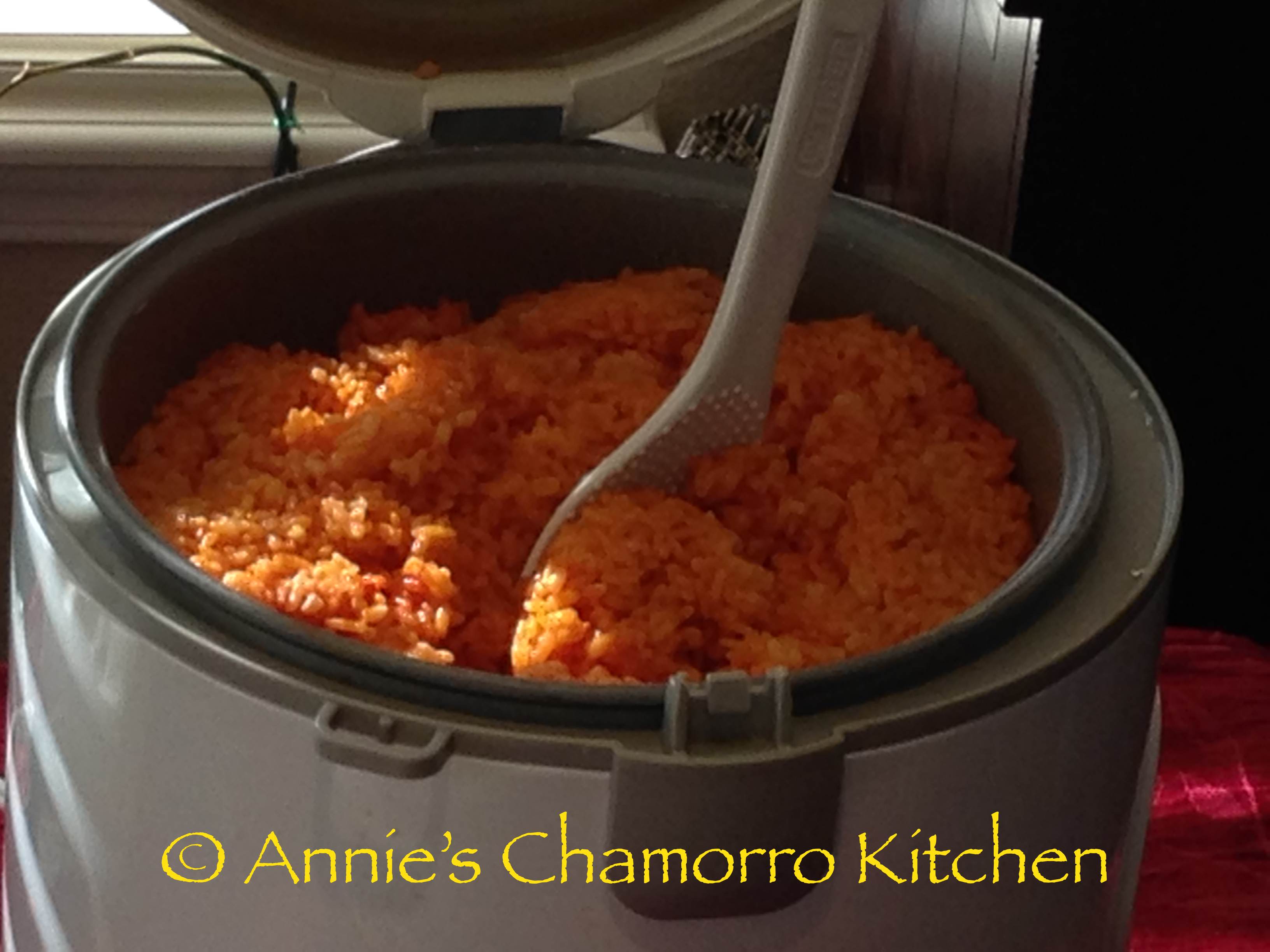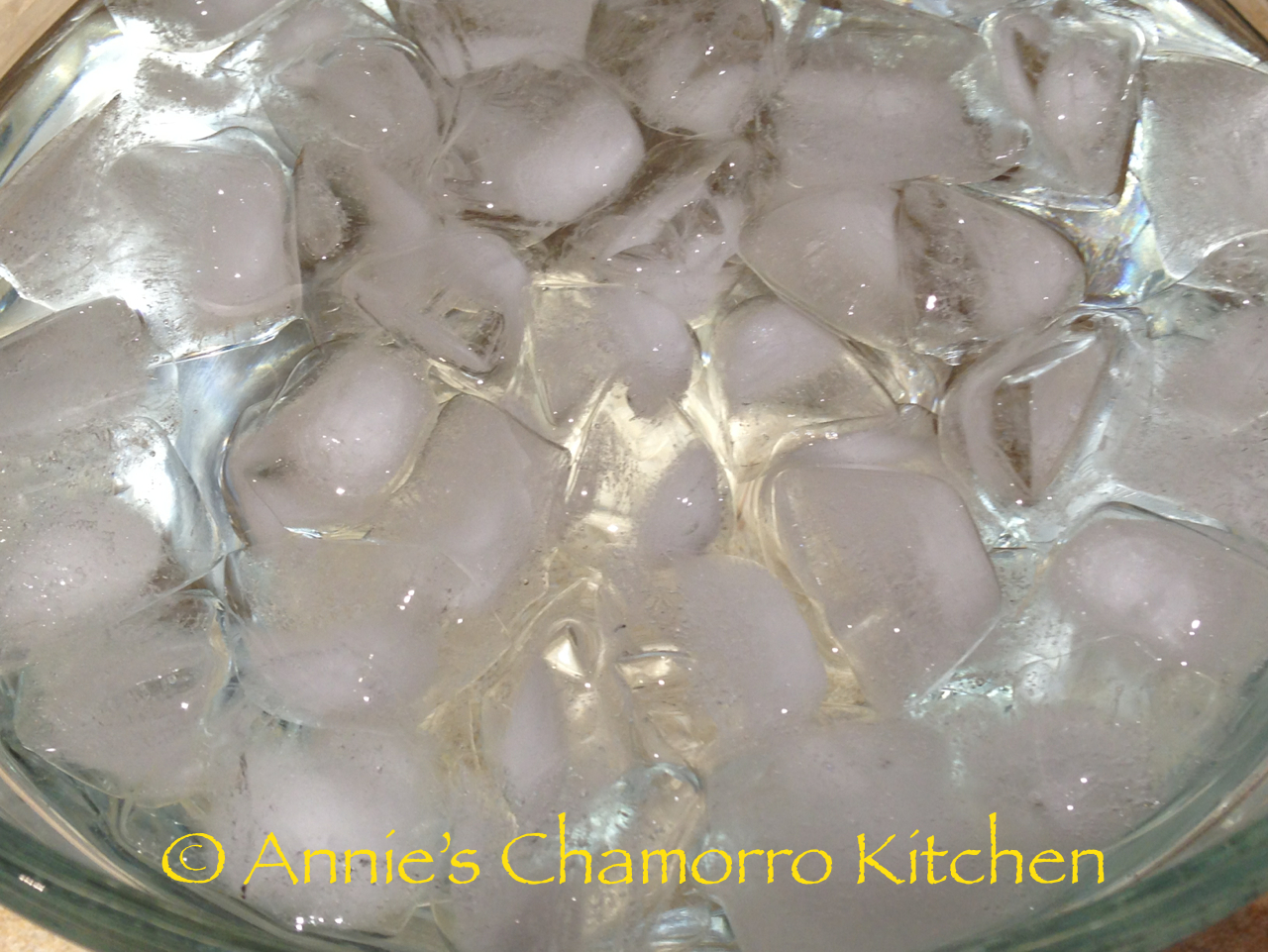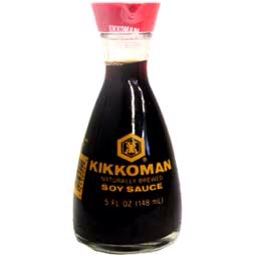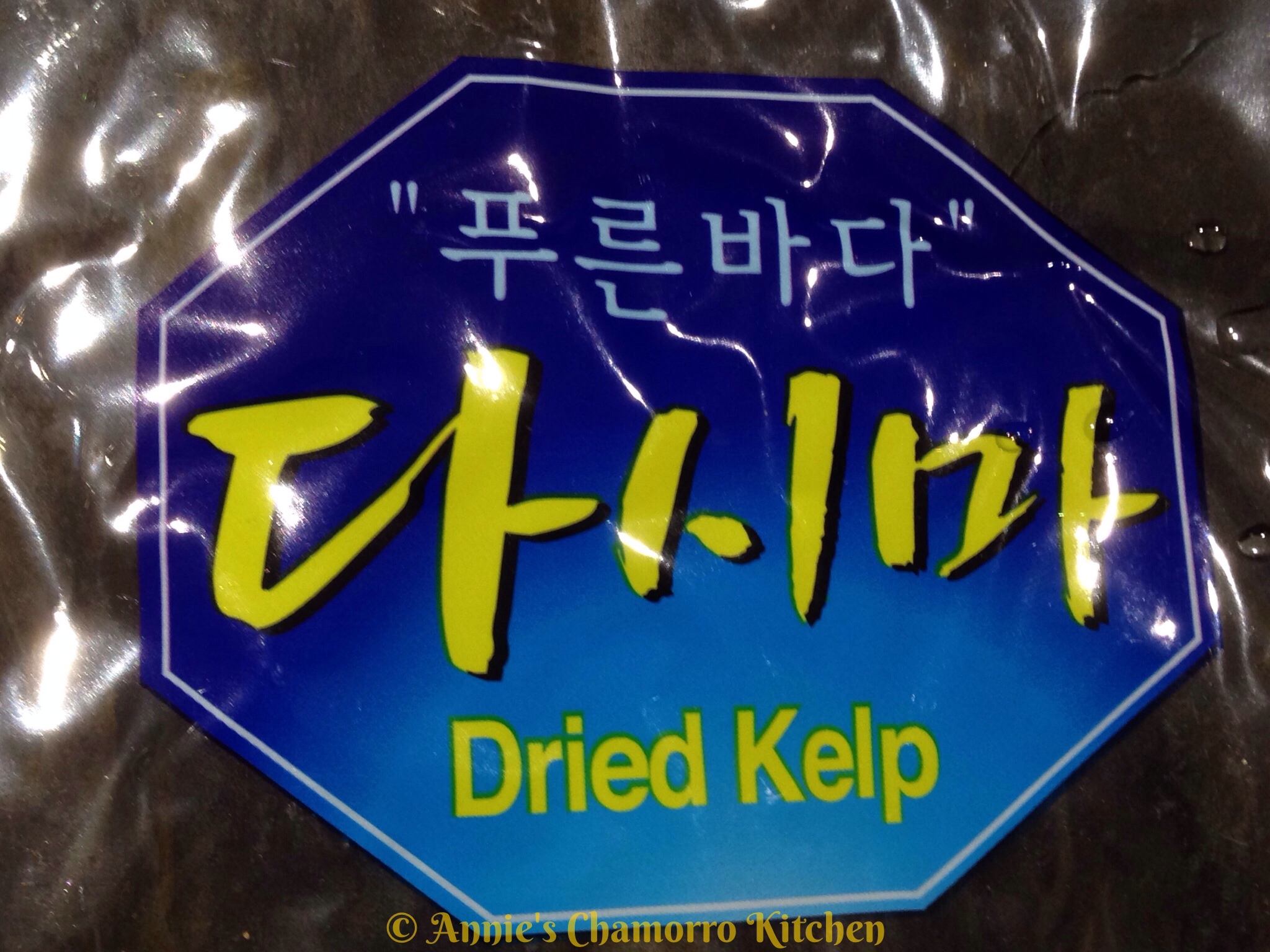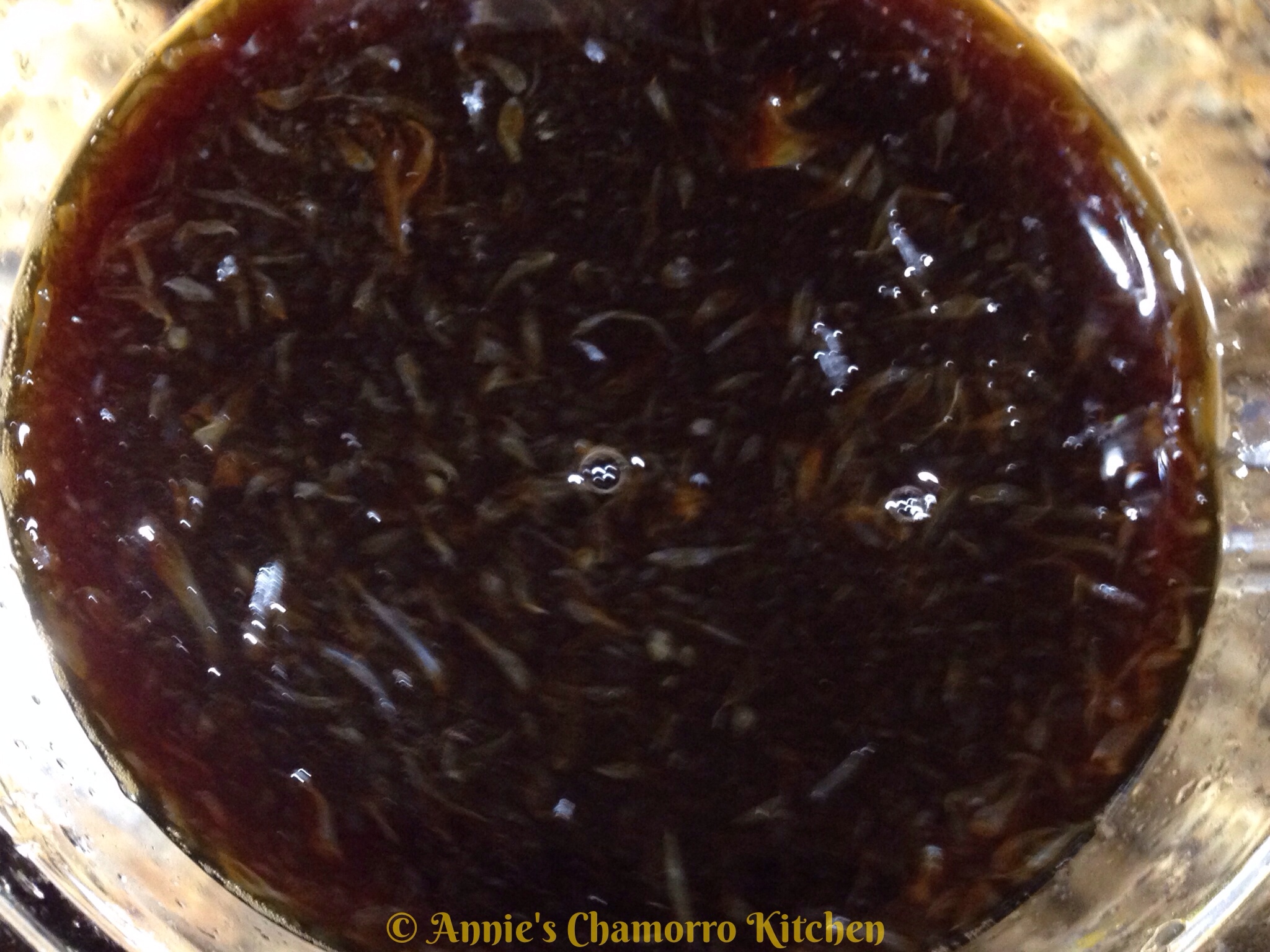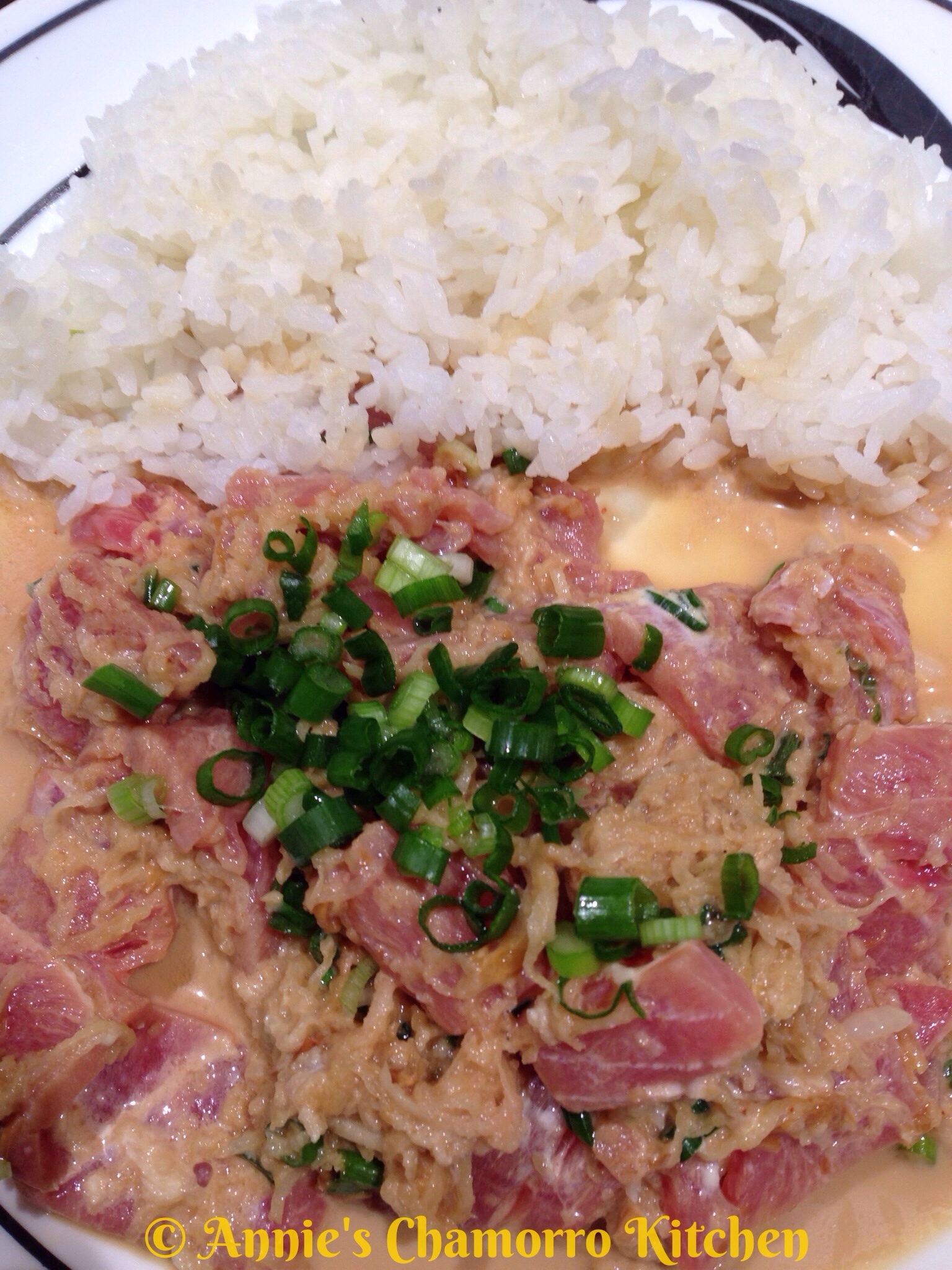It’s currently 9 degrees outside, with a windchill of -11 degrees — it’s the perfect time for a pot of my delicious Beef Shank Kådu (which means soup, in Chamorro) with fresh vegetables and vermicelli noodles. Come to think of it, this soup is good at ANY time, not just when it’s cold and blustery outside. After all, we make kådu on Guam, where the temperature is in the 80’s year-round! 😉
I used beef shanks (with bones) for this recipe, but you can use any lean cuts of beef you like. I like shanks because the bone marrow in the bones give the broth an extra rich and concentrated beef flavor. Most shanks are marbled with sinew. If I’m pressed for time, I’ll cook the meat in a pressure cooker, along with some onions, garlic and water, just long enough to break down the sinew and tenderize the meat. I started this soup around 8 am, cooked the meat low and slow for a couple of hours, then added the vegetables the last half hour before eating. If you don’t braise the meat long enough, the sinew in the meat won’t break down enough and you’ll end up with tough, dry meat in your soup.
I prefer using fresh vegetables when I make soup (with the exception of canned tomatoes and corn). I know, you can cut your prep and cooking time by more than half if you use frozen vegetables, but I don’t particularly like that the frozen vegetables are cut so large (I end up cutting each one smaller–that’s very time consuming), nor do I like that it’s overcooked by the time my soup is done. Nope — it’s fresh vegetables for this soup or I don’t make it.
I know what you’re thinking by now…you’re probably thinking, “gosh, she sure is picky.” Well, for this soup, I am. I think it’s because this is how my mom made it, using vegetables picked fresh from my dad’s ranch. Sometimes we’d have wing beans and green beans in our soup, along with squash and onions. Other times we’d have fresh corn and tomatoes picked fresh off the vines.
If you thought I was picky with my choice of fresh over frozen vegetables, let me tell you about my choice of noodles. I’ve tried making this soup with rice noodles, but it’s just not the same as using vermicelli or glass noodles. There are many brands of vermicelli noodles (not the kind used for Italian pasta dishes, mind you). I like using Korean vermicelli noodles, namely the kind used for Jap Chae (or Chap Chae). If you don’t know what type to buy, go to your local Korean or Asian market and ask a clerk for Korean Jap Chae noodles.
Give my recipe a try. I think you’ll like it. 🙂
Beef Shank Kadu with Fresh Vegetables and Vermicelli Noodles

Ingredients:
- 5 medium sized beef shanks, with bone
- 1/2 teaspoon black pepper
- 2 tablespoons garlic powder (or 6 cloves fresh garlic, minced)
- 1 tablespoon onion powder (or 1 small onion, diced)
- 6-8 tablespoons Dashida (Korean beef flavored powdered seasoning)
- 10 cups water
- 2 large carrots
- 2 stalks celery
- 1 (2-inch) piece of ginger root
- 1 medium potato
- 1 handful of green beans
- 1 can (28 oz.) petite diced tomatoes, drained
- 1 can (15.25 oz.) corn kernels
- 1 bag Korean vermicelli noodles (plus enough hot water to submerge the noodles in)
Directions:
1. Rinse each piece of meat. Trim off and discard any excess fat around the meat. Cut around the bones to separate them from the meat. Place the bones in a large stock pot over medium low heat.

2. Cut the meat into small pieces; I cut the shank meat that had a lot of sinew marbled through it into large chunks. Place the meat into the pot. Cook over medium low heat until the meat starts to brown. After most of the meat has browned, add the black pepper, garlic and onion powders (or fresh garlic and onions), and Dashida. Stir to combine, then add the 10 cups of water. Keep the heat at medium low. With the pot covered, simmer for about 2 hours. Every now and then, skim off any fat and sediment from the surface of the broth and discard.
Tip: After cooking, let the meat and broth cool to room temperature then place in the refrigerator. After several hours, remove the solidified fat off the surface of the broth and discard. Continue with the remaining steps below.

3. While the meat is simmering away, prepare the vegetables.
Prep the carrots: Peel the carrots. Slice into sticks, then dice.



Prep the celery. Cut into sticks then dice.


Prep the ginger. Peel (scrape the skin with a spoon) then thinly slice the ginger.

Prep the potato. Peel the potato. Cut into sticks (like french fries) then dice.


Prep the beans. In my list of ingredients, I stated “a handful” of beans was enough. This is what I mean by “a handful.”

Cut the tips off the ends of the beans, then thinly slice them.

4. After a couple of hours of simmering, the sinew in the large chunks of shank meat should have broken down and softened. Remove the large chunks of meat from the pot. Let it cool then cut the meat into small pieces then return the meat to the pot.
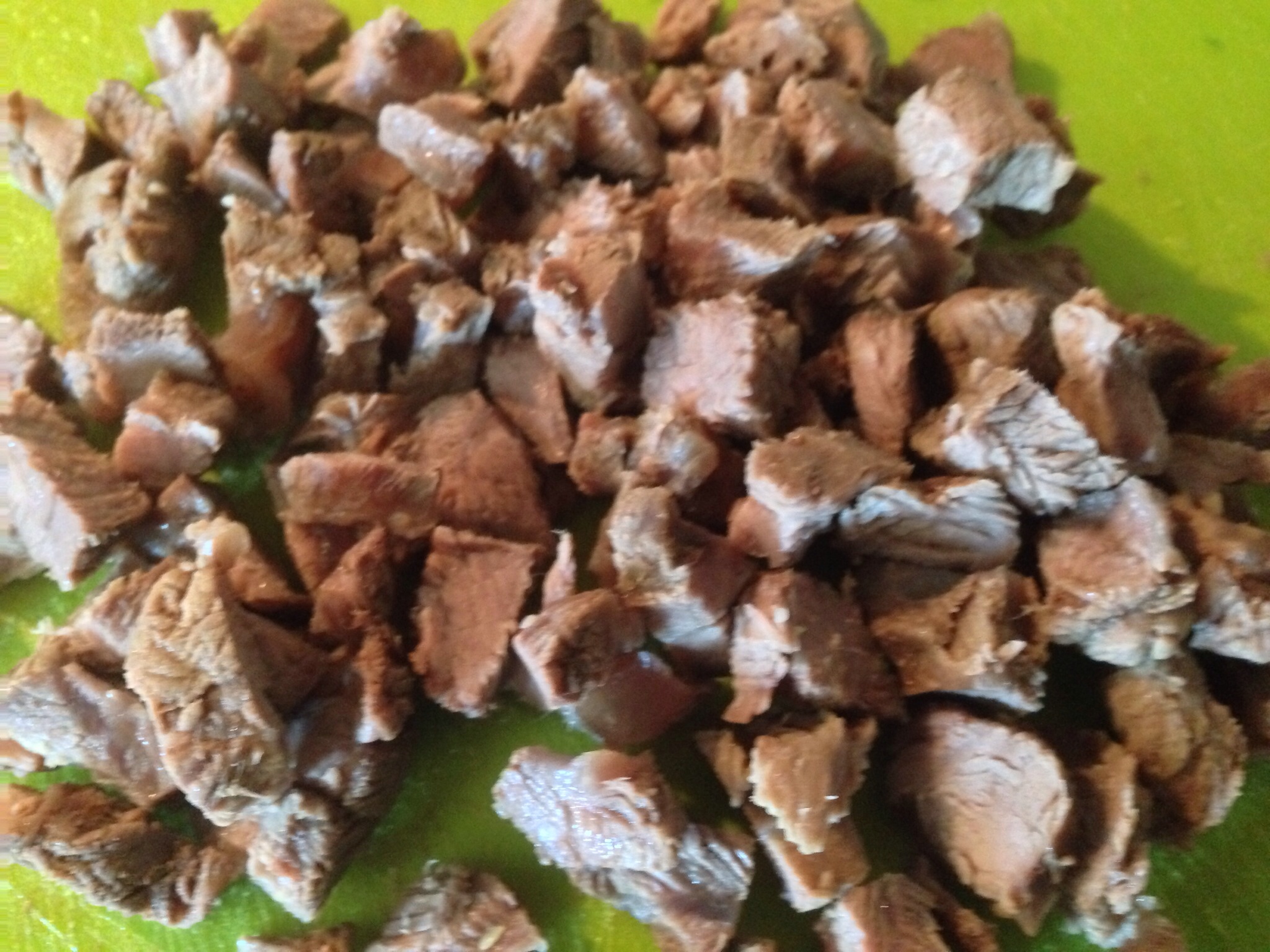
5. Add the tomatoes (don’t forget to drain the liquid!) and cut vegetables to the pot. Stir to combine.


6. Simmer the vegetables over medium high heat for 10 minutes. Meanwhile, prepare the noodles. Place the noodles into a large bowl. Pour hot water (I used hot water from the tap) over the noodles; use enough water to completely submerge the noodles. Let the noodles sit in the hot water for 5 minutes to soften slightly. After the noodles have softened, use a pair of kitchen scissors to cut the noodles into small pieces, about 3 inches in length. Drain the noodles in a colander then add them to the pot, stirring to combine.


7. Add the drained corn to the pot. Stir to combine. Cook for another 10 minutes or so, or just until the potatoes and carrots are cooked through (don’t over cook them).


8. Remove from the heat and serve while hot. ENJOY!

Save the bone marrow for me, please! 🙂


 2. Into the pot, add the Dashida, bacon fat, black pepper, garlic, and achote powder. If you don’t have any saved bacon fat, substitute with olive or vegetable oil.
2. Into the pot, add the Dashida, bacon fat, black pepper, garlic, and achote powder. If you don’t have any saved bacon fat, substitute with olive or vegetable oil.  3. Add the green onions to the pot.
3. Add the green onions to the pot. 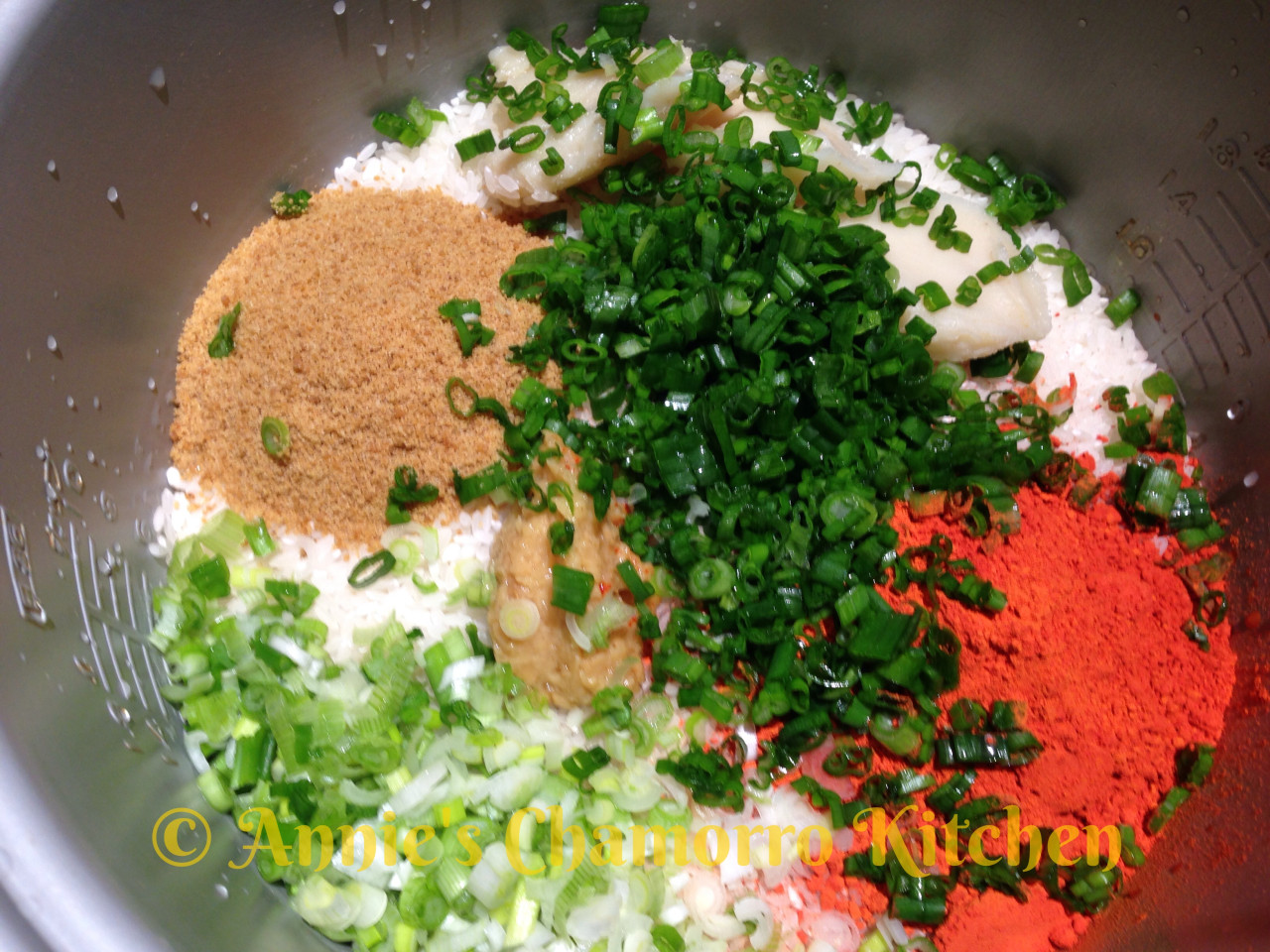 4. Carefully pour the hot water into the pot. Stir to combine all the ingredients and to dissolve the achote powder and Dashida. The bacon fat will start to melt; don’t worry if it doesn’t completely melt at this time.
4. Carefully pour the hot water into the pot. Stir to combine all the ingredients and to dissolve the achote powder and Dashida. The bacon fat will start to melt; don’t worry if it doesn’t completely melt at this time.


